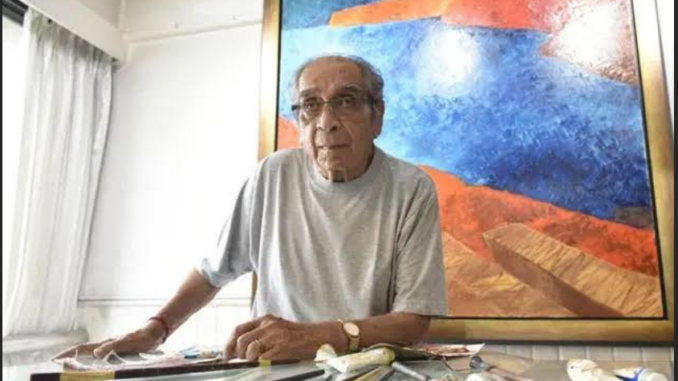
12 April 1928-06 January 2020
Foreword
Alok Bhalla
In 1995, Akbar Padamsee sent me photographs of the ink and brush portraits of prophets reproduced here for a special issue on violence of the journal, Yatra: Writings from the Indian Subcontinent. Done after Padamsee’s famous series on Christ, these remarkable portraits are marked by shock, fear and despair. Some of these faces, structured out of deep shadows and thick black lines reminiscent of German expressionist paintings, have the stillness of death-masks; while others are drawn with angular, thin, nervous lines which twist and turn with pain. As one looks at them with empathy one reserves for one’s own face in the mirror as lines of mortality begin to form over it, one gets the feeling that these people, with their eyes shut and their mouths clenched, neither want one’s compassion nor one’s support; all they long for, instead, is to stay still and be allowed to turn slowly into black stones and so evade sorrow forever.
There are, however, a few portraits which suggest a change in Akbar Padamsee’s mood. While these faces continue to be scarred with suffering – how can anyone evade grief in our times – their eyes seem to glow with mercy. It is as if they have found, as Christ did at the most extreme moment of his agony, the courage to cherish, pity, recover some shards of wisdom from the ruins and recall a few moments of humanity. The lines of these portraits are light, graceful and lyrical.
**
![]()
![]()
![]()
![]()
![]()
********
Note Yatra was the quarterly journal for writng and the visual arts from the subcontinent that Alok Bhalla began in 1992 with Nirmal Verma and U.R Ananthamurthy. It folded up in 1995. The Beacon would like to consider it as one of its illustrious forebears.
Akbar Padamsee an Indian artist and painter, was considered one of the pioneers in Modern Indian painting along with S.H. Raza, F.N. Souza and M.F. Husain. Over the years he also worked with various mediums from oil painting, plastic emulsion, water colour, sculpture, printmaking, to computer graphics, and photography. In addition, he worked as a film maker, sculptor, photographer, engraver, and lithographer. He was awarded the Lalit Kala Akademi Fellowship (Lalit Kala Ratna) by the Lalit Kala Akademi, India's National Academy of Arts, in 1962, the Kalidas Samman from the Madhya Pradesh Government in 1997 for Plastic Arts and the Padma Bhushan, India's third highest civilian honour in 2010
Alok Bhalla is at present, a visiting professor of English at Jamia Millia Islamia. He is the author of Stories About the Partition of India (3 Vols.). He has also translated Dharamvir Bharati’s Andha Yug, Intizar Husain’s A Chronicle of the Peacocks (both from OUP) and Ram Kumar’s The Sea and Other Stories into English.
Alok Bhalla in The Beacon A Prayer For My Daughters: Alok Bhalla WHEN KABIR SAW, HE WEPT… Ahimsa in the City of the Mind: Language, Identity-Politics and Partitions Stand by Me: Song of a Farmer The Self As Stranger I Am A Hindu

Leave a Reply